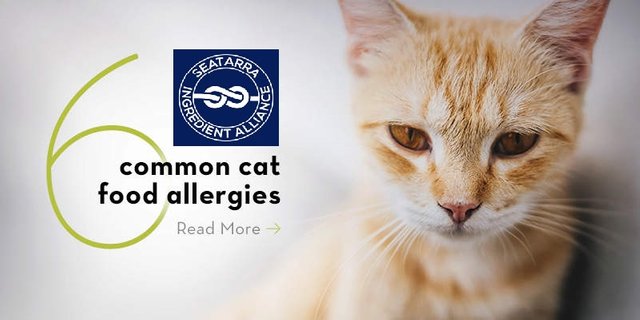Common Food Allergies in Cats
Do you get startled by the frequent sneezing of your cat every day? Did you notice his sudden scratching of the side bald, snoring or paws chewing? If you have, then your cat might be encountering food allergies.
Cats are quite similar to dogs in terms of their susceptibility to different types of allergies. Although environmental allergies such as mildew and pollen are much more common than food allergies in cats, they are difficult to diagnose. It is only 10 to 15 percent of all allergic reactions that occur from food in cats.
Nonetheless, due to the lack of faster and more accurate diagnostic tests, it becomes much more difficult to detect and treat the allergies caused by cat foods. Therefore, it is important to rely on the best pet food ingredient suppliers.
In this guide, we will list down all the common food allergies in cats and their risk factors. So, let us begin.
What is a food allergy?
Food allergies refer to the adverse reaction caused by a specific protein in cat foods. The immune system starts overreacting to any food substance the cat has already consumed. Even though food allergies are rare in cats, up to 15% of food allergies can compel cats to suffer from itchiness.
As a cat owner, it is very important to recognize the common symptoms of cat food allergies and determine if your cat has been suffering from them. Also, do little homework on the best ingredient manufacturers to feed your cat with the best quality cat foods.
Signs of Food Allergies in Cats
The most common sign of food allergies in cats can be none other than their constant itching. This is different from seasonal itching as it does not heal from seasonal changes and remains year-round. Plus, itching can arise in any part of the body. Still, the common parts involved in it remain the head and neck.
Other common symptoms of food allergies in cats include:
● Scratching
● Biting
● Licking
● Overgrooming
Skin lesions in cats are also common. These includes:
● Redness
● Small crusts
● Papules
● Plaques
● Ulcerations
● Self-generated hair loss caused by scratching, licking, or biting
● Self-generated trauma causing sores
● Diarrhea
● Vomiting
Foods Related To Food Allergies
Food allergies in cats can develop at any point in their life. Besides, most common food allergies arise due to some kind of abnormal reaction to nutrients like protein in cat foods.
Foods commonly associated with cat food allergies include fish, chicken, beef, and dairy products. Other less common food sources of allergies in cats include corn, wheat, barley, eggs, lamb, and rabbit.
However, food allergies can happen due to any food substances and do not limit to these items only. It is quite valid that the cat must have consumed an ingredient present in its food. Later, the cat may have started developing an allergy to the food ingredient. Also, a food ingredient that the cat may have been consuming for a long time can still affect the cat at some point in its life. This could happen even if there were no previous issues.

Food allergies Risk factors in Cats
Well, congenital predisposition has a key role in causing food allergies in cats. Food allergies are very often associated with environmental or inhalant allergies. Many cats show allergic reactions to environmental as well as food ingredients.
A cat can develop food allergies at any time after three months of their birth. Also, there are no gender biases, as food allergies are probable to develop in both male and female cats.
Final Thoughts
Food allergies in cats are problematic, but you can manage them by avoiding the triggering ingredients. So, always choose Seatarra Ingredient Alliance to get high-quality ingredients in pet foods. Check out https://seatarra.com and see the reliability and services of the best suppliers of food ingredients for 30 years.
